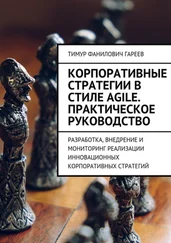Often the use of authority, especially in the form of micromanagement, is not needed. If you dictate what people should do and how they do it, you fail to leverage their ideas and their experience, and you make them feel disempowered. No one wants to be just an order taker.
On the other hand, a leader sometimes needs to make a final decision. A great example of this is Elon Musk's decision to have Tesla develop its own battery technology in-house. An article in Teslarati chronicles this, and Elon Musk's role in that development. According to the article,
“Musk's subordinates have reportedly argued against the idea of developing proprietary battery cells, but the CEO has been adamant about his goal.”4
The CEO (Musk) made the final decision, and today Tesla's battery technology is changing the industry.
Musk could have been wrong, though. There is no way to ensure that the person or group with the best judgment about a particular issue will get to make the decision about it. Quibi was supposed to revolutionize Hollywood by bringing movies to mobile devices, but the instincts and vision of Jeffrey Katzenberg and Meg Whitman—two highly credible industry insiders—proved wrong. 5
There is no fail-safe approach. Leadership should try to make sure that those who have the most experience, depth of knowledge, insight, and vision about an issue are all able to consider and discuss it openly in a manner that encourages everyone to contribute to the discussion, and that those who have the most invested in any sense will have the final say—informed by everyone else's thoughts.
The Path-Goal Leadership Model
As we said, having authority does not mean that you always use it. A leadership model known as Path-Goal Theory 6 posits four leadership styles.
Directive
Achievement oriented
Participative
Supportive
A directive leader is one who issues commands and expects others to follow. An achievement-oriented leader is hands-off but sets objectives for team members. A participative leader is collaborative and engages in group decision-making. A supportive leader is more focused on the well-being of the members than on the business objective.
Few people fit these patterns perfectly, of course. This is just a model, but it is useful. We introduce the terms here to illustrate different styles of leadership and to set the stage with the idea that there are many forms of leadership. Please bear that in mind when reading the following sections. We will consider forms of leadership in more detail later in the chapter.
We also want to state that no one form of leadership is better than the others. They each have their place, depending on the situation, and sometimes more than one style is needed.
Collective Governance Does Not Solve the Problem
People have tried to figure out if organizations can be structured in a way that authority can be bypassed. Perhaps if there are governance rules, then everyone can be equal, and the system will become collectively governed. Everyone has a vote, in a sense. The most well-known approach for that is the holacracy model.
Does it work? It can, if you hire just the right people. But no one has shown that the model is easily repeatable. And it is not clear that it actually works that well. Medium tried it and abandoned it. According to Jennifer Reingold, writing in Forbes about Medium's experience,
“The sheer number of rules and regulations, combined with the potential for politics to seep in in different forms, makes holacracy, in my view, a questionable replacement for the classic management system, as flawed as the latter may be.” 7
What about giving up on governance altogether and just letting people self-organize? Let leaders emerge—whoever they may be.
It seems that a lack of structure actually leads to hidden power structures that are as stifling—or more so—as formal structures can be. An article in Wired relates the story of Jo Freeman, a 1960s women's liberation movement icon. She complains that “If anything, the lack of structure made the situation worse.” That is, the hidden power of male-dominated systems was more oppressive than entrenched but explicit power structures. 8
Perhaps authority structures are needed, but simply fewer of them. This leads to the idea of “flat” organizations—ones that have fewer managers and therefore fewer levels of hierarchy. Google famously tried that approach in 2002, but it did not last long. According to an article in Fast Company , “Folks were coming to Larry Page with questions about expense reports and interpersonal conflicts.” 9
Perhaps the preference for self-organization is cultural. One of the members of the Agile 2 team claimed that the Agile community's beliefs about leadership and team behavior reflect a Silicon Valley perspective. Another pointed out that Silicon Valley culture tends to value, in his words, “innovation, freedom, entrepreneurship, collaboration, shared ownership, and anarchism.” Those values seem fairly well-aligned with Agile values and attitudes as they are typically expressed.
Does this make Agile incompatible with some human cultures? We are not sure; but to us, the conclusion must be that people need to be able to be selective about Agile ideas and apply them in their own way, rather than using a one-size-fits-all set of practices.
There is an inherent belief in Western society that democracy is a fair process; and yet, democracy can lead to “tyranny of the majority,” whereby the majority vote to subjugate a particular minority. Democracy is not inherently fair. German sociologist Robert Michels proposed the “iron law of oligarchy,” which posited that any democratic system will inevitably devolve into an elite oligarchy. 10 Thus, the assumption that even a completely egalitarian team operates in a fair manner cannot be assumed to be true.
Another problem is that in any self-governed system, leaders emerge; informal authority develops. And so even though there are no appointed leaders, there are still leaders. No one appointed Genghis Khan to lead the many tribes of Mongolia to create the Mongolian empire: he appointed himself, through the influence and power that he developed. No one appointed Augustus to lead the Roman empire.
In any group, leaders usually emerge, irrespective of any governance structure. In the United States, Donald Trump was not even a politician but managed to develop enough influence to get elected to be a US president. Influence is leadership, and influence creates its own kind of de facto authority, and it is not always good leadership. Adolf Hitler became a world leader not through peaceful ascent through the ranks but through party politics and the popularity and therefore informal influence that he developed through his speeches, writing, and acts of intimidation, with disastrous results. Leaders can, with effort, undermine any governance structure. Russia has a Constitution, but its leader seems able to do whatever he chooses. Rules of behavior do not ensure that a team will behave well or that there will not be a lot of unfairness going on.
A study published in the Journal of Business and Psychology has shown that in-person teams tend to choose leaders who are confident, magnetic, smart-seeming, and extroverted; but in the study, remote teams chose leaders who “were doers, who tended towards planning, connecting teammates with help and resources, keeping an eye on upcoming tasks and, most importantly, getting things done. These leaders were goal-focused, productive, dependable and helpful.” 11
The implication is that in-person teams do not necessarily choose good leaders but instead choose leaders who “look good”—who look like leaders but might actually be poor ones. This indicates that one should not trust or rely on emergent leadership—at least not for in-person teams.
Читать дальше











